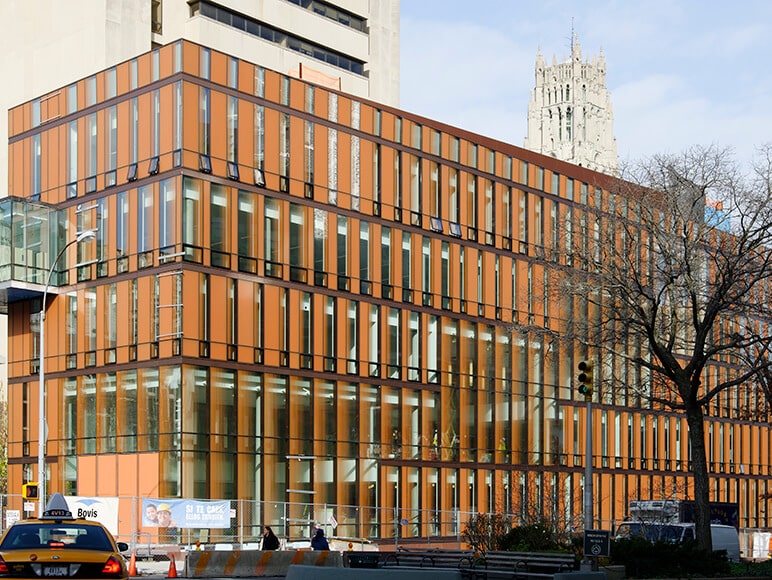Acid-etched glass can offer a large number of design options in multiple interior and exterior applications. These options can be expanded by combining acid-etched glass with other different glass fabricating processes depending on the requirements desired or the visual needed.
Ceramic frit combined with acid-etched is a superb choice. First, the glass will be acid-etched. This involves treating the surface with an aqueous solution of hydrofluoric acid. Resulting in a smooth satin texture and a matted translucent appearance. Then the ceramic frit will be applied to the un-etched side of the glass before it is tempered or heat strengthened. On tempering or heat strengthening, the paint enamel fuses into the glass surface and becomes a permanent coating.
The acid-etched side will enhance the color rendering by absorbing and defusing light. With such a wide color palette to choose from, the creative possibilities are endless. Color is an essential part of any construction as our reaction to color stimulates different feelings and emotions. Color is the look and vibe of any design. The choice of color as well as the pattern used makes it possible to have variations in light transmission levels. It also has a strong impact on the solar heat gain coefficient of a building. Patterns on the glass also increase the level of privacy while adding a decorative effect.
Furthermore, the mix of processes can decrease the intensity of the glossy traditional look of glass and allow the architects or designers to play with lighting, whether it’s natural or artificial. Light is one of the most important influences in the understanding and perception of architecture. This is why acid-etched glass mixed with ceramic frit can be an interesting material to work with as it can completely block some portion of the light based on different patterns with the applied ceramic frit on the back of the glass but you can also create distinct intensities and let the light shine through the etched surfaces.
One of the most impressive uses for acid-etched glass combinations is in building constructions. More specifically, in spandrel applications where it is used for its sustainability and superior resistance to environmental elements. Frit and acid-etched can also match the color of the glass in the insulated glass units, windows or curtain walls. Acid-etched glass adds a design element to the glass envelope. It creates a modulation effect on the building façade and increases the uniformity of the building due to its matt finish. In spandrel applications, acid-etched glass can be used in all 4 positions of the insulating glass unit. On the other hand, when ceramic frit is combined with acid-etched glass, it is mostly used in positions 2 or 4.
Acid-etched glass is also compatible with these processes:
- Cutting
- Polishing
- Beveling
- Laminating* (laminate is applied to the unetched surface)
- Insulating
- Bending
- Drilling
- Tempering
- Fire Rating
To learn more about the innovative ways of combining acid-etched glass with ceramic frit, contact your architectural manager or see more examples in our project gallery.


